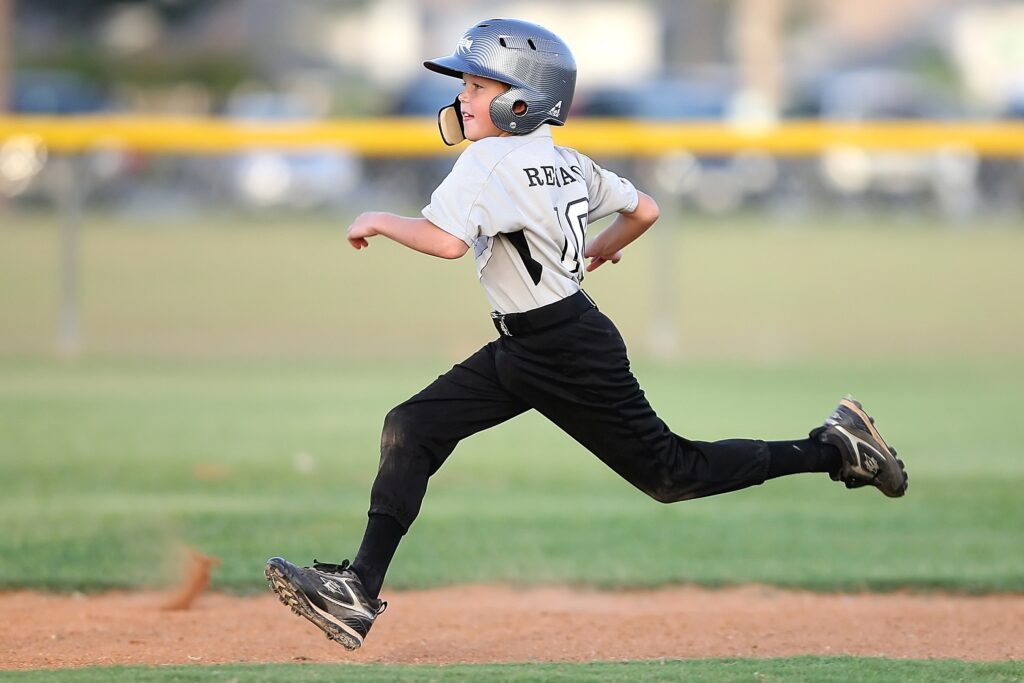
Speed Technique and Why We Need to Teach It at a Young Age
Speed is something we all want, be it in our cars, internet connection, and how quickly we can get things done. Everywhere we turn, everything is a race to be the quickest. So why should running be any different? Because speed is a skill, like shooting a basketball or hitting a baseball, technique significantly affects how fast you can run.
Proper speed technique can help you run faster and prevent injuries along the way. And since most sports require some level of speed, speed technique is something that can be taught and can then be applied to many different sports. Proper speed technique gives young athletes an edge over their competition early on as well.
Scientific studies have shown that children who receive speed training early on tend to perform better academically than those who do not. This is likely due to the fact that they learn how to focus, shift focus, and concentrate better when they have to move quickly.
Here’s everything you need to know about speed technique.
What Is Speed Technique, and How Does It Work?
Speed technique is all about running with proper form. When you run with good form, your body can move more efficiently and use less energy to cover the same distance. This means that you can run faster for more extended periods without tiring as quickly. Good form also helps prevent injuries because it puts less stress on your muscles, joints, and connective tissues.
So how do you run with proper form? Here are a few tips:
- Keep your head up and your eyes forward. Looking down at the ground can cause you to hunch over, making breathing harder and wasting energy.
- Lean forward from your ankles, not your waist. This will help you use gravity to your advantage and keep your center of gravity over your feet (which is where it should be).
- Keep your arms at a 90-degree angle and close to your body. Swinging your arms widely wastes energy and can make it challenging to maintain balance.
- Land on the balls of your feet and push off with your toes. Heel striking puts unnecessary stress on your knees and takes away from the power of your push-off.
- Take short, quick strides. Longer strides may cover more ground but require more effort and can lead to injury.
Why Teaching Speed Technique at a Young Age Is Crucial
While speed technique can be something learned at any age, as with many things, learning it at a younger age is much more beneficial to an athlete for many reasons. Here are a few of the main reasons why it’s crucial to teach speed technique at a young age:
Speed Is a Skill That You Can Learn
Acceleration, deceleration, stride length and frequency, and posture are all skills that can be learned through proper coaching and training. Teaching these techniques at a young age gives athletes a better foundation on which to build their speed later in life.
Early Adopters Have an Advantage
In any field or endeavor, those who start early typically have an advantage over those who start later. The same is valid for developing speed as an athlete: early adopters will have a leg up on their competition, not only because they will have more time to hone their craft but also because they will likely be more coachable since they haven’t yet developed bad habits.
Proper Training Is Key
While some people are born “fast,” you can learn speed through proper coaching and training. Early adopters have an advantage in this regard, but all athletes can improve their speed if they are willing to do the hard work. Achieving top speeds requires a mix of sprinting drills, ply metrics, weightlifting, and other forms of conditioning.
Develop Coordination and Balance
The proper technique ensures that the athlete is using their muscles efficiently and effectively, leading to better performance on and off the field/court/etc. Additionally, since most sports require sprinting or quick movements, being able to execute these properly can mean the difference between winning and losing a game!
Improved Muscular Development
Teaching speed techniques at a young age helps to improve the development of muscles, leading to a stronger and more capable body. For example, exercises such as hurdle drills, sprint mechanics, and agility drills help to strengthen the muscles used in running. This increased muscular development can help to reduce the risk of injury and improve performance in sports.
Improved Agility
Agility is the ability to change direction quickly, safely, and efficiently. By teaching speed techniques to young athletes, they can learn how to move their bodies quickly and accurately to make quick changes in direction.
Develop a Love for Running
Teaching kids speed technique at a young age can instill in them a love for running that will last a lifetime. So many adults give up on running because they never learned how to enjoy it when they were younger. By teaching athletes the proper techniques early on, we can help them appreciate the sport and stay active for years to come
The Bottom Line
Using speed techniques can help young athletes develop their athletic skills, increase their speed, and become more well-rounded. Speed technique also helps young athletes develop good habits and learn proper form, which can help them stay safe while participating in sports. Teaching speed technique to young athletes is a great way to help them succeed in their sport and stay safe. Coaches who work with young athletes should emphasize the importance of starting early and taking advantage of the benefits that come with it. By instilling these values at a young age, athletes will be more likely to commit to a long-term plan and stick with it as they grow older.
At Kinetic Sports Performance and Football University, teaching young athletes the fundamentals of speed technique is key to developing their game. Start your athlete’s journey today and join us to learn the skills that will help them excel in sports and life. Contact us to sign up now and give your athlete the competitive edge they need!
